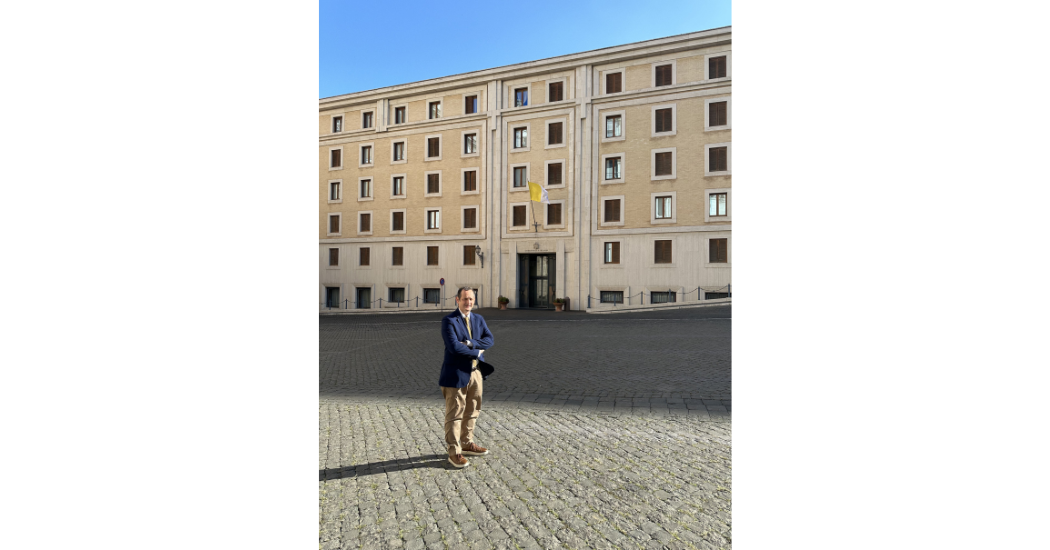The business trip of Matteo Bertelli, president of MAGI’S LAB in Italy and founder of MAGISNAT in the United States, began on the morning of September 28, 2024. A clear and sunny Roman day provided the perfect backdrop for a day filled with meetings and cultural discoveries. Bertelli’s goal was twofold: to deepen scientific collaborations and participate in important scientific and diplomatic events, while also immersing himself in the extraordinary cultural and historical wealth of Rome, a city that for centuries has been a crossroads of knowledge, faith, and art.
The Fountain of the Naiads and Aqua Marcia: Monument of History and Symbol of Beauty
The day began with a walk through Piazza della Repubblica, where the splendid Fountain of the Naiads stands, a monumental work that celebrates the ancient Aqua Marcia aqueduct. Built in 144 BC, this aqueduct was one of the most important in ancient Rome, providing crystal-clear water to the city for centuries. The fountain, originally constructed in a temporary form in 1870, was later redesigned by engineer Alessandro Guerrieri in 1888, who initially planned to place four sphinxes around the central basin. However, it was only with the intervention of the Sicilian sculptor Giuseppe Rutelli (grandfather of former mayor Francesco Rutelli) that the fountain took its final form.
Rutelli replaced the sphinxes with four naiads, mythological figures associated with water: the lake nymph with a swan, the oceanid taming a wild horse, the river nymph riding a river monster, and the underground water nymph lying on a dragon. In 1912, the statue of Glaucus, symbolizing man triumphing over the forces of nature, was added to the center of the fountain, depicted in a symbolic struggle with a fish.
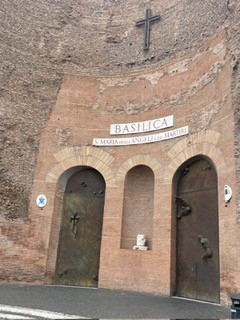
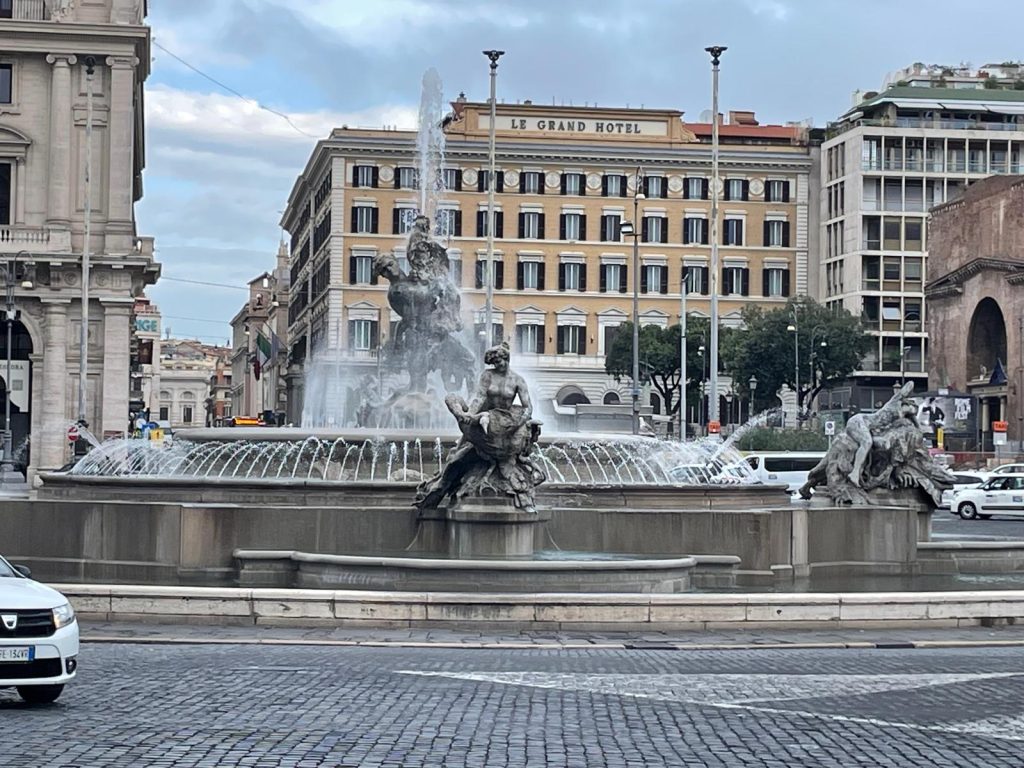
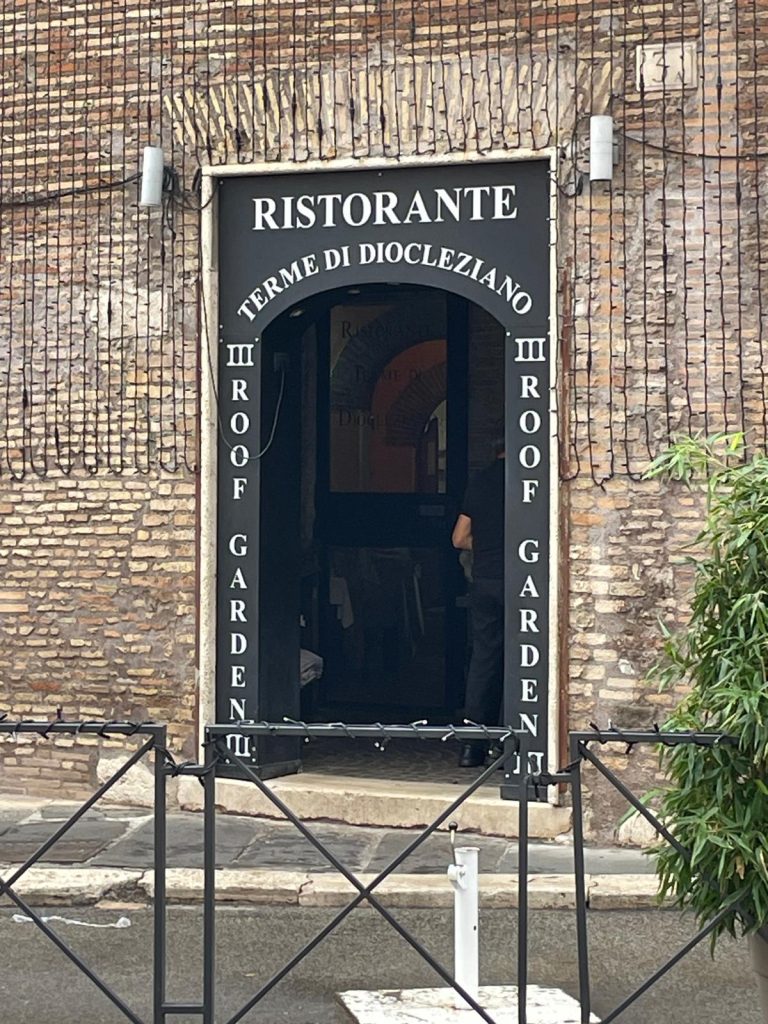
This fusion of beauty and power did not go unnoticed by the Roman people. The collective of Roman folk poets “Sor Capanna,” known for their irreverent verses, dedicated a song to the fountain, humorously imagining the naiads in provocative poses around Glaucus. This playful touch, typical of the Roman spirit, added a lighthearted flavor to the monument’s artistic grandeur.
The Basilica of Santa Maria degli Angeli: Where Science and Spirituality Meet
Continuing his itinerary, Bertelli headed to the Basilica of Santa Maria degli Angeli and Martyrs, located within the ancient Baths of Diocletian. Designed by Michelangelo Buonarroti in 1563, the basilica is an extraordinary example of architecture blending art, science, and spirituality. One of the most fascinating elements of the church is the meridian, or solar clock, designed in 1575 by Giovanni Battista Lilius. This clock uses sunlight to calculate time with extreme precision and was used to regulate Rome’s clocks and study celestial movements.
Michelangelo, with his Renaissance vision, designed a building that served not only for worship but also for astronomical observation. The meridian, with its exceptional precision, symbolized the harmony between science and faith, representing the connection between human time and the eternal cycle of the cosmos. The visit left Bertelli deeply moved by this profound link between scientific knowledge and spirituality, a theme that has always permeated his approach to research.
The Vatican: A Dive into the Spiritual Heart of Rome
After exploring the city’s architectural wonders, Bertelli headed to Vatican City, entering areas closed to the public, shrouded in mystery and at the spiritual heart of Catholicism. Beyond the imposing Vatican walls, the group ventured into the Vatican Gardens, an oasis of peace spanning half the Vatican’s territory. Created in the 14th century, the gardens are a perfect example of Renaissance garden design, adorned with fountains, classical statues, and exotic plants. Here, far from the city’s chaos, the Pope and other clergy members retreat for moments of meditation and reflection.
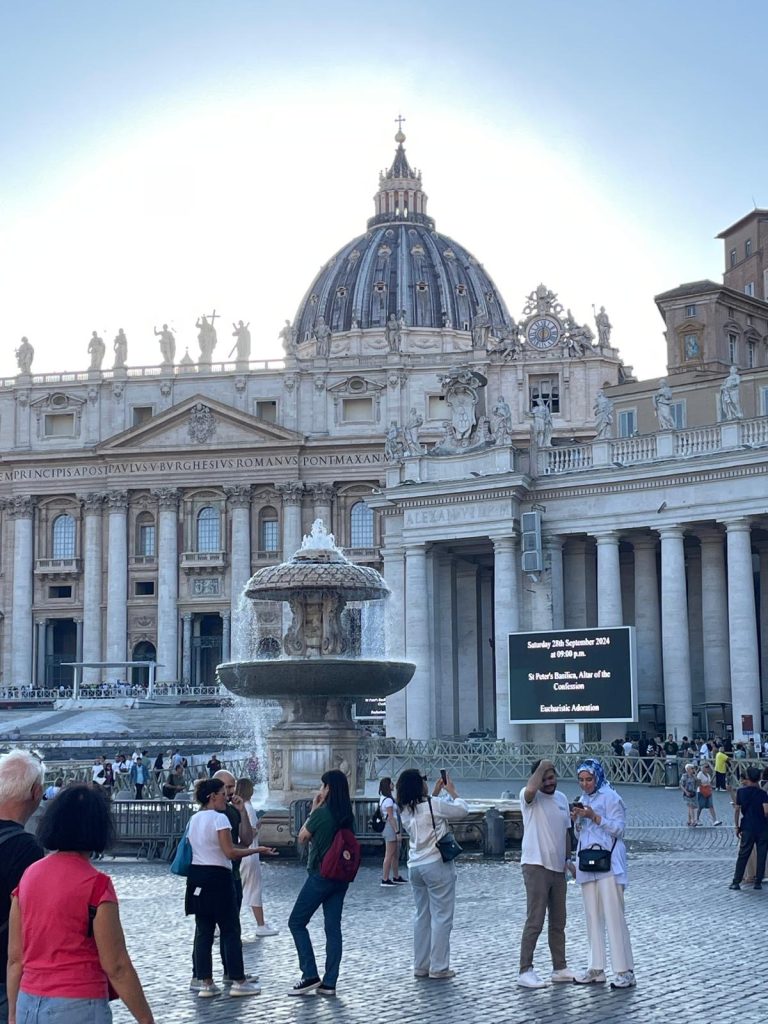
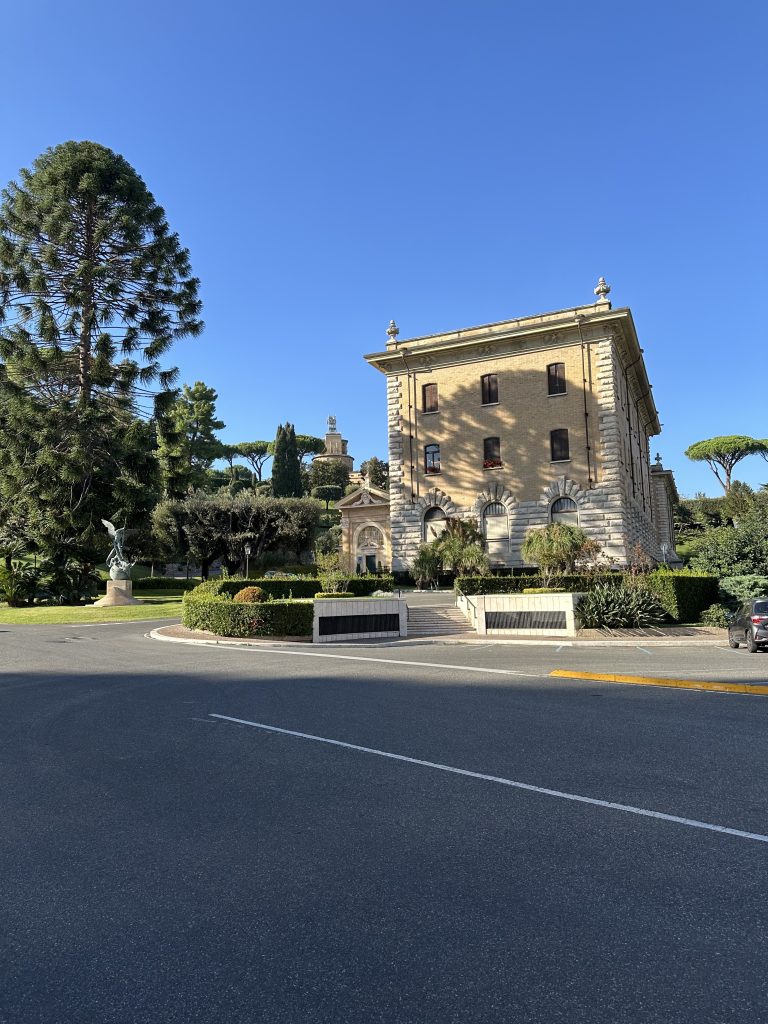
Immersed in the serene beauty of the place, Bertelli strolled among ancient statues, pausing to pray before the statue of Saint Michael the Archangel, celebrated the following day (September 29), contemplating the tranquil atmosphere that permeates this sacred space. The visit to the gardens was followed by a stop at the Vatican’s internal railway station, a particularly intriguing location.
ITALF National Congress: A Moment of High Scientific Importance
Before concluding his trip, Matteo Bertelli actively participated in the VIII ITALF National Congress – II LIO National Congress, held at the Pontifical Athenaeum Regina Apostolorum from September 28 to 30, 2024. This event, of great scientific importance, brought together experts and researchers from all over Italy and abroad, offering a platform to discuss the most innovative topics in biomedical research.
During the congress, Bertelli participated in a roundtable titled “Researchers in Comparison: Anatomy, Genetics, Proteomics, Metabolomics, and Biochemistry in the Service of the Clinic,” where he discussed his research on lipedema and its genetic implications. His presentation garnered significant interest from the audience, sparking lively debate on how genetics can improve diagnoses and therapies for this condition.
The congress also served as an important networking opportunity, paving the way for future scientific collaborations between MAGI’S LAB, MAGISNAT, and other institutions.
Dinner at the Terme di Diocleziano Restaurant: A Meeting of Science, Art, and Traditional Cuisine
In the evening, the day was enriched by a special dinner at the Terme di Diocleziano restaurant, located among the remains of the Diocletian’s Thermal Baths, near the Opera House and across from the National Roman Museum. This restaurant is a landmark for those seeking to immerse themselves in Roman culinary tradition, offering authentic dishes prepared with fresh, high-quality ingredients. With its welcoming atmosphere and impeccable service, the restaurant is the ideal setting for a dinner that combines gastronomic pleasure with high-level conversations.
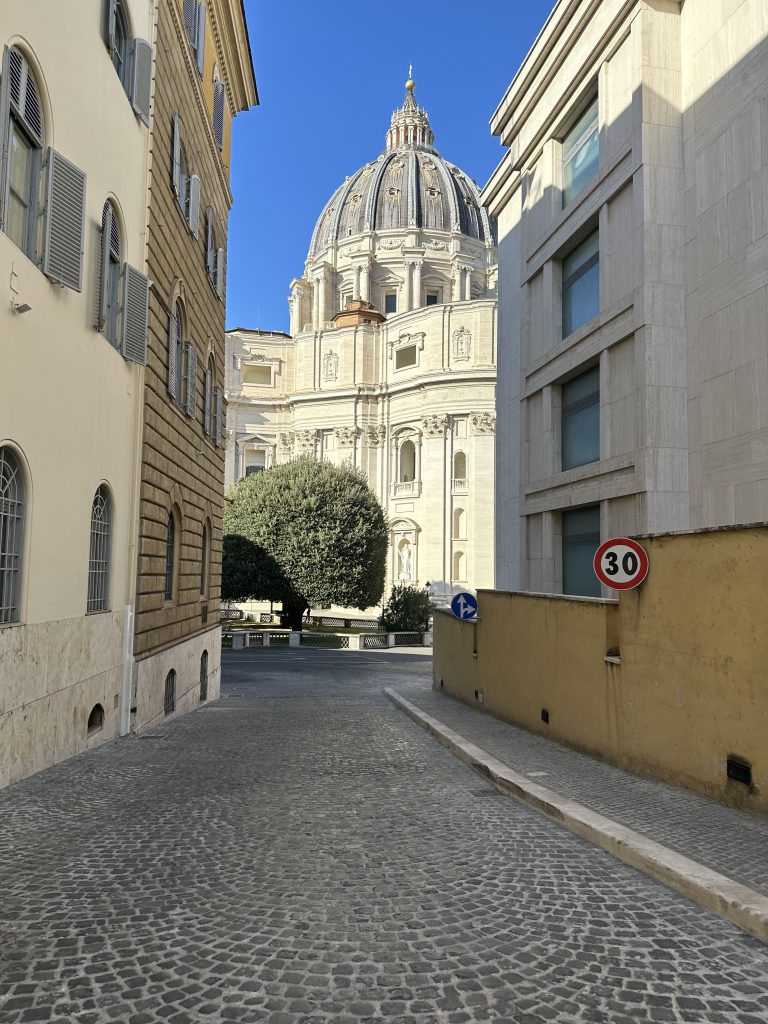
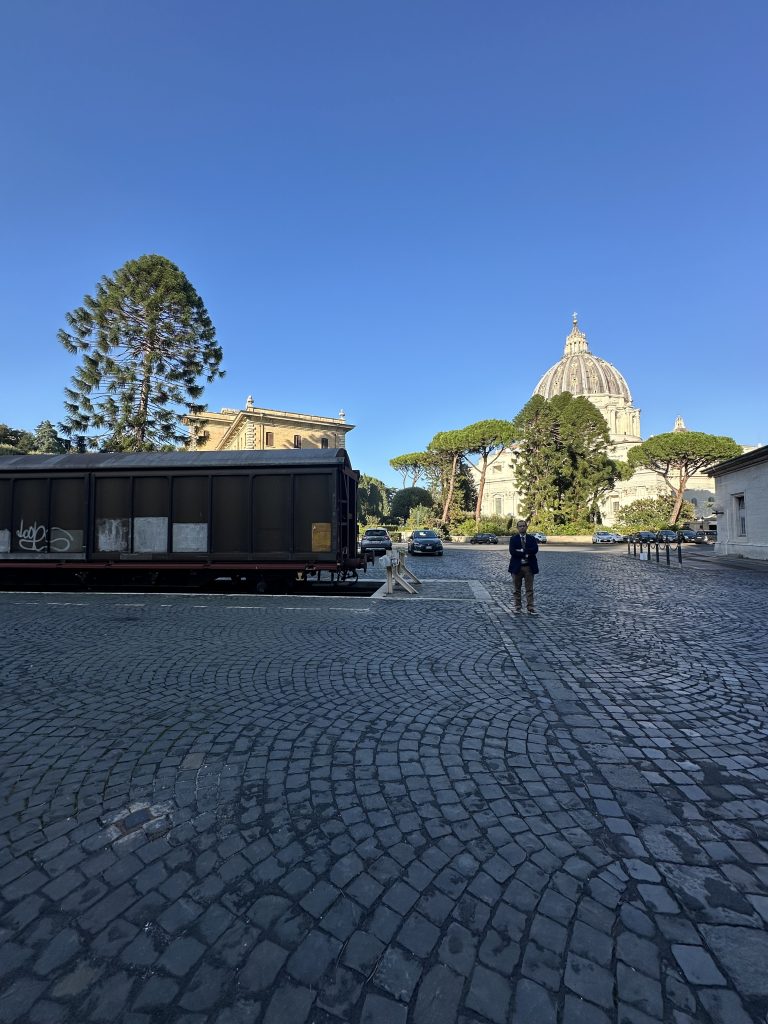
In addition to Matteo Bertelli, distinguished figures from the academic and scientific world attended the dinner, including Professor Pietro Chiurazzi, a geneticist at the Catholic University of Rome, and Professor Benedetto Falsini, a renowned ophthalmologist. Dr. Lucia Ziccardi, a former researcher in ophthalmology at the University of Molise, contributed fascinating insights into new diagnostic technologies in the field of visual health. The conversation was enriched by Bertelli’s expertise in genetics, sparking reflections on potential future collaborations.
The evening’s menu was a celebration of Roman cuisine. Guests savored classic dishes such as bucatini all’amatriciana, prepared with crispy guanciale and pecorino romano, and the famous rigatoni cacio e pepe, where the creaminess of the cheese perfectly blended with the bold flavor of black pepper. Among the second courses, coda alla vaccinara, a traditional Roman dish slow-cooked in a rich tomato and red wine sauce, was the highlight. For side dishes, there was cicoria ripassata, sautéed with garlic and chili, and carciofi alla giudia. The evening concluded with a final toast of limoncello or sambuca (an Italian anise-flavored liqueur), followed by Italian coffee.
Rome and Americans: A True Love Affair
Rome has always held a unique appeal for Americans, captivated by its millennia of history, its culture, and its role as the center of Christianity. For many American Catholics, Vatican City represents a place of deep spiritual importance, a destination for pilgrimages and official visits. The frequent visits of U.S. presidents to the Pope highlight the strategic and symbolic significance of the relationship between Rome and Washington, both in religious and diplomatic contexts.
But the attraction to Rome extends beyond the Vatican. The city is an open-air museum, with every corner telling stories from the ancient Roman Empire, the Renaissance, and the Baroque periods. Rome’s allure has also been celebrated in American popular culture, notably in the novel and film “Angels and Demons” by Dan Brown, which made the Eternal City even more intriguing and mysterious to American audiences. This thrilling narrative, set among Rome’s most iconic landmarks, helped cement the city’s image as a place of enigmas and conspiracies tied to the Catholic Church, intertwining history and fiction.
For Americans, Rome represents a unique combination of artistic beauty, historical importance, and spirituality. The city offers an unparalleled experience where the sacred and secular coexist, creating an environment rich in culture, art, and reflection. Matteo Bertelli’s journey to Rome, including access to areas of the Vatican closed to the public, was a perfect example of how this city can inspire and captivate, blending professional growth with a cultural and spiritual experience that leaves an indelible mark.



















